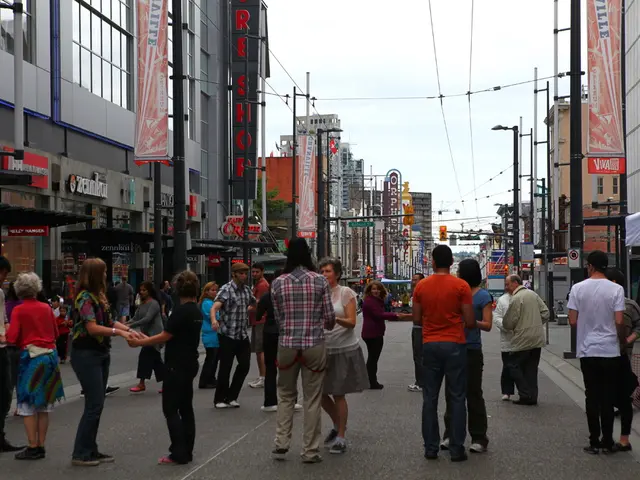Enforcing Action in Hamburg Subways
Hop aboard Hamburg's Smart S-Bahn: Prognosticating train car occupancy
Keep your fingers on the pulse of the S-Bahn trains in Hamburg with the DB Lightgate system. Now, you can see at a glance how full each train car is, before you even board! Take advantage of the technology that's currently being tested in 88% of all Hamburg stations. Intellectual light barriers and artificial intelligence make this possible.
How do the light barriers work in Hamburg's S-Bahn?
Since January 2023, the DB Lightgate technology is being tested in Hamburg. With light barriers installed on both sides of the rails, the system measures the amount of light passing through the window of each incoming and outgoing train. The more passengers in a train, the less light appears through the window. The system also takes historical data into account. A KI then calculates the occupancy rate of each incoming train, resulting in an accuracy of over 90%, according to DB Lightgate's leader, Julia Kuhfuß.
Hamburg: A shining example for other cities
Berlin is the next city to adopt this system as of September 2024, though without AI integration. Testing is also underway in Munich, Leipzig, and Frankfurt, with systems varying slightly in each city. Traffic expert Andreas Knie doubts the long-term success of camera-based systems with AI processing. Instead, he suggests using camera footage from platforms and AI analysis for more actionable insights. Google reviews can also provide data on train car occupancy levels.
On the other hand, Karl-Peter Neumann, honorary chairman of the Pro Bahn passenger association, is a strong supporter of the technology's application in Hamburg and Berlin. In a congested public transport environment without seat reservations, such data can ensure reliable occupancy information for passengers. Currently, there are no occupancy information displays for long-distance travel. Passengers will need to resort to apps and websites to stay informed.
Written by Pauline Boewing
Pauline Boewing, born in 2003, cannot be rattled by teleprompters and even went live on air for a Bayerischer Rundfunk broadcast despite bomb threats. Raised in Stuttgart, she speaks four languages and has lived in five cities. She studied Communication Science with a minor in Law at Munich University and worked for the "Abendzeitung" newspaper. Her abroad studies were completed in Leicester. She has no passion for football but is an avid St. Pauli fan. Nickname: Pauli.
Pauline Boewing
Carlsberg Brewery in Hamburg goes vegan
Umstritten Ballet Director Demis Volpi must step down
Full closure of the Elbchaussee
Naming ceremony for the Nightjet "City of Hamburg"
- The DB Lightgate technology, successfully tested in 88% of Hamburg's stations, is revolutionizing the public-transit industry by using artificial intelligence and data-and-cloud-computing to predict train car occupancy.
- As other cities including Berlin follow Hamburg's lead in adopting such technology, discussions are ongoing about the long-term efficiency of camera-based systems with AI processing, with traffic expert Andreas Knie advocating for using platform camera footage and AI analysis for more insightful data.
- The adoption of smart technology in Hamburg's public-transit system, particularly within transportation, is overall widely supported, with figures like Karl-Peter Neumann, honorary chairman of the Pro Bahn passenger association, emphasizing the importance of reliable occupancy information in a congested public transit environment.







